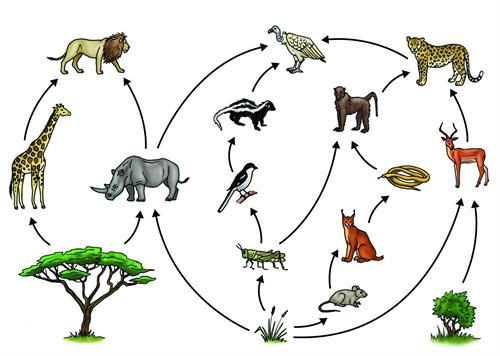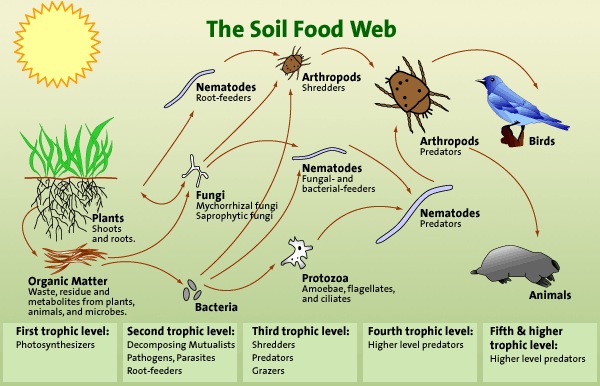PDF chapter test TRY NOW
The network of food chains that gets interlinked at various trophic levels to form various feeding connections among the different organisms in a biotic community is called a food web.
It can also be defined as:
The interlinking of various food chains is called a food web.
A food web depicts various feeding relationships that exist between different species within an ecosystem.

Terrestrial food web

Soil food web
Characteristics of the food web:
1. A food web is more realistic than a food chain.
2. Food web consists of various food chains interlinked at different trophic levels.
3. A food web is not straight, and the food chain components do not run parallel.
4. Food web provides several alternate foods to the consumers. Also, there are feedback checks that operate in a food web that keeps the populations of various species constant.
5. A food web is essential for the stability of an ecosystem.
Chemical fertilisers and pesticides used to nourish and protect crops make their way and contaminate many food chains. The chemicals are washed into the soil or water bodies. The fertilisers pass from the soil to the plants as the roots absorb the toxic chemicals along with water and minerals. From plants, the chemicals are transferred to herbivores and finally to the consumers.
As plants absorb these pesticide residues, it can be found in cereals like wheat and rice, vegetables and fruits, and even meat. Toxic chemicals like DDT (dichloro-diphenyl-trichloroethane) are transmitted at every successive trophic level during the process of energy flow. As these chemicals are not biodegradable, they accumulate at every level of the food chain.
Since the number of organisms in each level decreases, the concentration of chemical compounds increases from producers to various levels of consumers. As a result, toxic chemical concentrations are highest in tertiary consumers, such as humans. This process is known as biological magnification. Through the process, toxic chemicals get accumulated in our bodies.
Simply washing cereal grains, fruits, vegetables, and meat will not remove these toxins. Thus, using chemical fertilisers and pesticides above certain limits disrupts natural ecosystems and causes environmental pollution.

Biomagnification
Reference:
https://www.flickr.com/photos/121935927@N06/13578885414
https://www.flickr.com/photos/cicada/2569385115
https://commons.wikimedia.org/wiki/File:The_build_up_of_toxins_in_a_food_chain.svg
